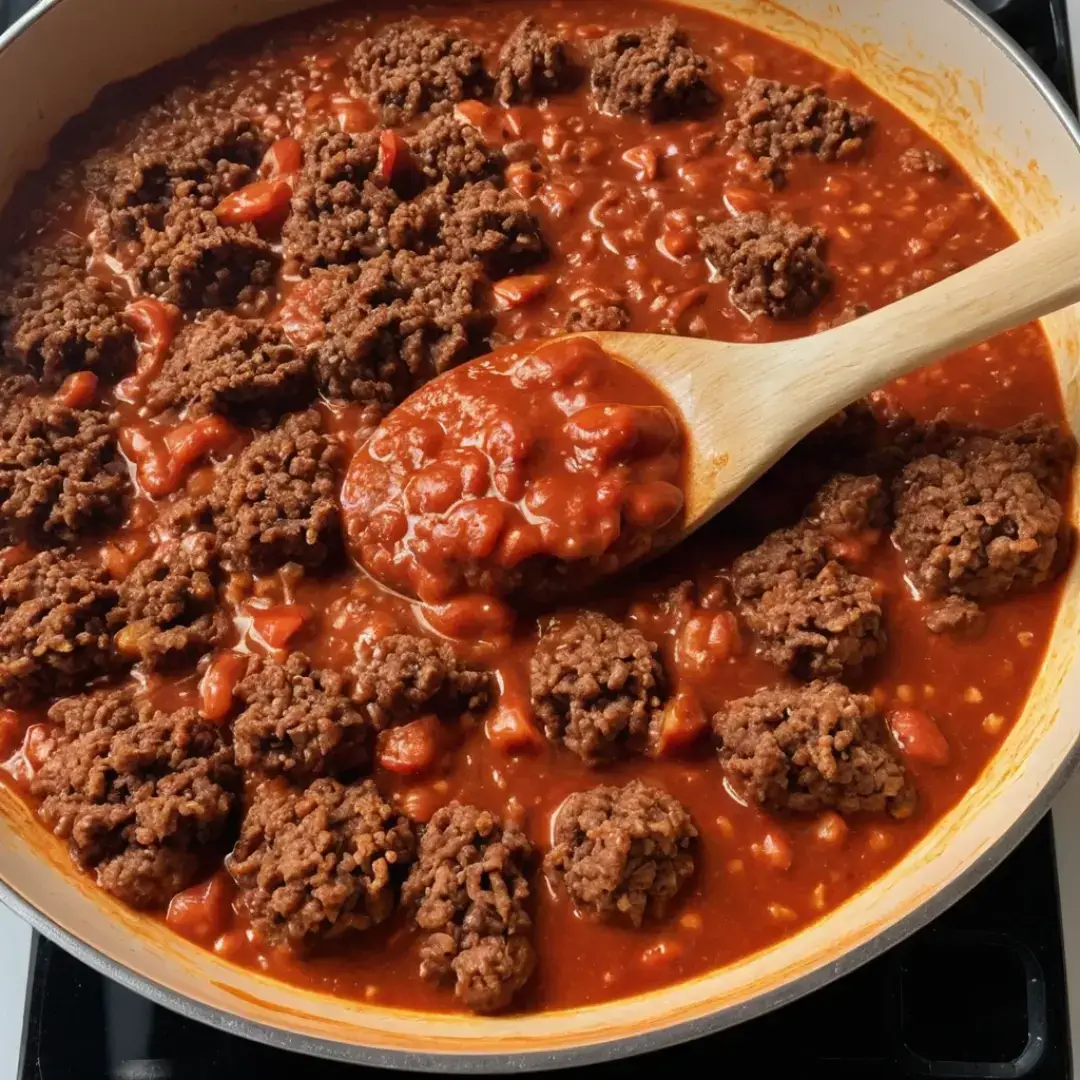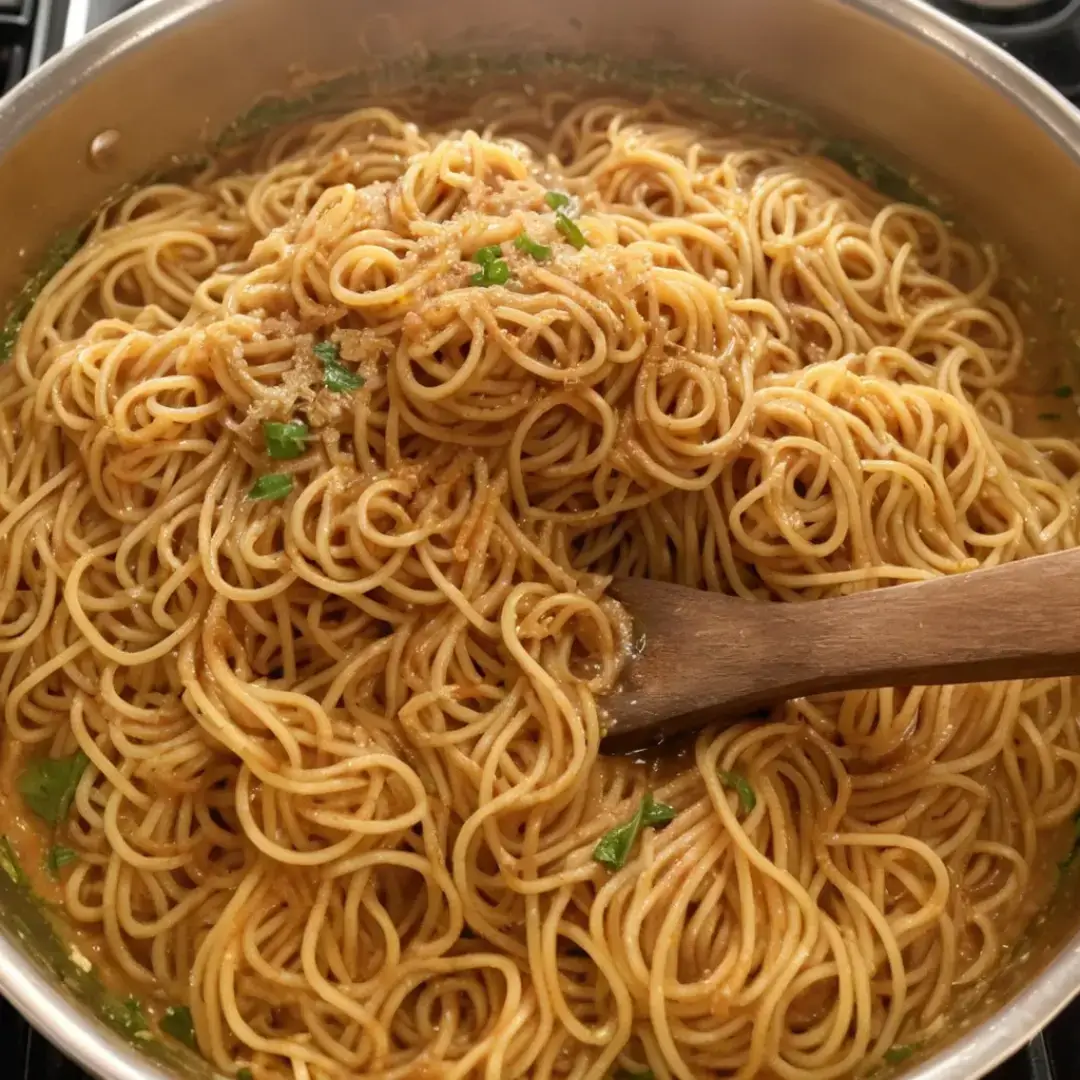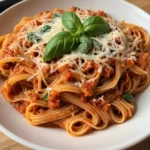Nothing says comfort food quite like a warm, cheesy Spaghetti Casserole Recipe fresh out of the oven. It’s the perfect blend of classic spaghetti flavors but with an irresistible baked twist—layers of pasta, savory meat sauce, and gooey melted cheese that come together for a dish that’s both hearty and satisfying.
Whether you’re cooking for a busy weeknight, feeding a hungry family, or looking for a meal that makes excellent leftovers, this Spaghetti Casserole Recipe checks all the boxes. It’s easy to prepare, budget-friendly, and a guaranteed crowd-pleaser. Let’s dive into this deliciously simple recipe that will have everyone coming back for seconds!
Why You’ll Love This Recipe
This Spaghetti Casserole Recipe is everything you love about traditional spaghetti but with a baked, cheesy upgrade. It combines tender pasta, rich marinara sauce, and savory ground beef, all topped with a golden, bubbly cheese layer. Every bite is packed with comforting flavors that will remind you of a home-cooked meal made with love.
Miranda, the heart behind Milestone Recipes, loves creating dishes that bring families together, and this Spaghetti Casserole Recipe is no exception. It’s simple, satisfying, and perfect for making ahead or freezing for later. Once you try it, it just might become a staple in your household!
Ingredients for the Perfect Spaghetti Casserole Recipe
A great Spaghetti Casserole Recipe starts with simple, flavorful ingredients that come together to create a dish that’s cheesy, saucy, and full of comfort. Here’s everything you need to make this easy and delicious meal.
For the Pasta & Sauce:
12 oz spaghetti noodles
1 tablespoon olive oil
1 pound ground beef (or Italian sausage for extra flavor)
1 small onion, diced
3 cloves garlic, minced
1 (24 oz) jar marinara sauce (or homemade sauce)
1 teaspoon Italian seasoning
½ teaspoon red pepper flakes (optional, for spice)
Salt and black pepper to taste
For the Cheese Mixture:
1 cup ricotta cheese (or cottage cheese)
½ cup sour cream
½ cup grated Parmesan cheese
For Topping:
2 cups shredded mozzarella cheese
¼ cup fresh basil or parsley for garnish
With just these basic ingredients, you’ll have everything you need to create a Spaghetti Casserole Recipe that’s rich, creamy, and full of delicious Italian flavors!
How to Make the Ultimate Spaghetti Casserole Recipe
Creating the perfect Spaghetti Casserole Recipe is simple, and with just a few easy steps, you’ll have a delicious, cheesy, and comforting dish ready to serve. Follow this guide for a flawless meal every time!
Cook the Pasta
Boil a large pot of salted water.
Cook the spaghetti noodles until they are al dente, following the package instructions. Drain and toss with a little olive oil to prevent them from sticking together.
Prepare the Meat Sauce
Heat a large skillet over medium heat and cook the ground beef until browned, breaking it apart as it cooks. Drain excess grease.
Stir in the diced onion and garlic, cooking until fragrant and soft.
Add marinara sauce, Italian seasoning, red pepper flakes (optional), salt, and black pepper. Let the sauce simmer for about 5 minutes to develop flavor.
Make the Cheese Mixture
In a separate bowl, mix ricotta cheese, sour cream, and Parmesan cheese until well combined.
Assemble the Casserole
Grease a 9×13-inch baking dish.
Spread half the spaghetti in the dish, then layer with half the cheese mixture and half the meat sauce. Repeat the layers.
Sprinkle shredded mozzarella cheese evenly on top.
Bake & Serve
Bake at 375°F for 25 minutes or until the cheese is melted and bubbling.
Let the Spaghetti Casserole Recipe rest for about 5 minutes before serving. Garnish with fresh basil or parsley, and enjoy!
This easy method ensures a flavorful, hearty, and perfectly cheesy Spaghetti Casserole Recipe every time!
Tips for the Best Spaghetti Casserole Recipe
Want to make sure your Spaghetti Casserole Recipe turns out absolutely perfect every time? These simple tips will help you get the best texture, flavor, and cheesy goodness in every bite!
1. Cook the Pasta Al Dente
Since the pasta will continue cooking in the oven, make sure to cook it al dente (slightly firm). Overcooked noodles can become mushy in the casserole.
2. Use a High-Quality Marinara Sauce
A rich, flavorful marinara sauce makes all the difference. Use a high-quality store-bought sauce or make your own for extra depth of flavor in your Spaghetti Casserole Recipe.
3. Add More Flavor with Italian Sausage
For a heartier, more flavorful casserole, swap out the ground beef for Italian sausage or do a mix of both.
4. Let the Casserole Rest Before Serving
After baking, let your Spaghetti Casserole Recipe sit for 5-10 minutes. This helps the layers set and makes serving easier.
5. Make It Ahead for Busy Nights
You can assemble the casserole a day in advance, store it in the fridge, and bake when ready. Perfect for meal prep!
Follow these tips, and your Spaghetti Casserole Recipe will be a guaranteed hit every time!

Serving Suggestions for Spaghetti Casserole Recipe
This Spaghetti Casserole Recipe is already packed with flavor, but pairing it with the right sides and toppings can make it even more delicious. Whether you’re serving it for a family dinner or a special gathering, here are some great ways to complete your meal!
1. Pair It with Garlic Bread
A warm, buttery slice of garlic bread is the perfect companion to soak up the rich marinara sauce in this Spaghetti Casserole Recipe. You can also try cheesy breadsticks for an extra indulgent touch.
2. Add a Fresh Side Salad
A crisp green salad with romaine, cherry tomatoes, cucumbers, and a light vinaigrette adds a refreshing balance to the hearty, cheesy casserole.
3. Serve with Roasted Vegetables
Oven-roasted zucchini, bell peppers, or asparagus bring extra flavor and a healthy contrast to this baked pasta dish.
4. Finish with a Classic Dessert
End your meal with a light dessert like tiramisu, cannoli, or a simple fruit salad to complement the richness of your Spaghetti Casserole Recipe.
No matter how you serve it, this dish is sure to be a hit!
Recommended Recipes to Pair with Spaghetti Casserole Recipe
Looking to build a complete meal around this Spaghetti Casserole Recipe? Pair it with the perfect side dishes and desserts to create a well-rounded, satisfying dinner. Here are some great options from Milestone Recipes that complement this baked pasta dish beautifully.
1. Garlic Butter Sourdough Bread
Crispy, golden, and packed with garlicky goodness, this bread is the ultimate side for your Spaghetti Casserole Recipe. Use it to soak up every last bit of sauce!
2. Pineapple Casserole Recipe
For a sweet and savory contrast, serve this Southern classic alongside your casserole. The combination of cheesy pineapple goodness and baked spaghetti is surprisingly delicious!
3. Strawberry Banana Pudding
Round out your meal with a light and fruity dessert. The creamy banana pudding with fresh strawberries adds a refreshing finish after enjoying a rich Spaghetti Casserole Recipe.
Pairing this comforting casserole with the right side dishes and desserts creates a meal that’s both delicious and memorable!
Notes on the Best Spaghetti Casserole Recipe
To make sure your Spaghetti Casserole Recipe turns out perfect every time, here are a few key tips and tricks to keep in mind.
Use al dente pasta. Since the noodles will continue to cook in the oven, boiling them until just firm ensures they don’t become too soft.
Let the casserole rest before serving. Giving it 5-10 minutes to cool slightly allows the layers to set, making it easier to slice and serve.
Customize the protein. Ground beef is classic, but Italian sausage adds extra spice and depth. You can also use ground turkey or a meatless option for a lighter version.
Make it ahead of time. Assemble the casserole up to a day in advance, store it in the fridge, and bake when ready. This makes meal prep a breeze!
Freeze leftovers for later. This Spaghetti Casserole Recipe freezes well—just store portions in an airtight container and reheat in the oven for a quick and delicious meal.
With these simple tips, your casserole will always come out cheesy, hearty, and full of flavor!

FAQs About Spaghetti Casserole Recipe
1. Can I prepare this Spaghetti Casserole Recipe in advance?
Yes! You can assemble the Spaghetti Casserole Recipe the night before and refrigerate it until you’re ready to bake. If baking straight from the fridge, allow a few extra minutes in the oven to ensure it heats evenly.
2. Is this casserole freezer-friendly?
Definitely! Let the Spaghetti Casserole Recipe cool completely before wrapping it tightly in foil. It can be frozen for up to three months. When ready to eat, bake at 350°F until heated through.
3. What pasta works best?
Classic spaghetti is ideal, but other options like penne, rigatoni, or rotini can also work. Just make sure to cook the pasta al dente to prevent it from getting too soft.
4. Can I swap out the cheese?
Of course! Mozzarella and Parmesan are traditional, but provolone, cheddar, or even gouda can add unique flavors.
Conclusion
This Spaghetti Casserole Recipe is the perfect balance of hearty, cheesy, and comforting flavors, making it an ideal dish for busy weeknights or family gatherings. The combination of tender pasta, rich marinara sauce, and a golden, bubbly cheese topping creates a meal that feels both indulgent and satisfying.
For Miranda, this dish brings back memories of childhood dinners, where the smell of baked spaghetti filled the house, and everyone gathered around the table for a warm, home-cooked meal. Now, she’s sharing this Spaghetti Casserole Recipe so you can create those same cherished moments with your loved ones.
Whether you’re making it for a quick dinner, prepping it ahead for an easy meal, or freezing it for later, this casserole is guaranteed to be a hit. So grab your ingredients, preheat your oven, and enjoy a delicious homemade dish that’s sure to become a family favorite!
Print
The Best Cheesy & Hearty Spaghetti Casserole Recipe
- Total Time: 40 mins
Description
This Spaghetti Casserole Recipe is a cheesy, comforting twist on traditional spaghetti. Made with layers of tender pasta, rich marinara sauce, and a creamy cheese mixture, it’s baked to perfection with a golden, bubbly mozzarella topping. Perfect for busy weeknights or family gatherings!
Ingredients
For the Pasta & Sauce:
- 12 oz spaghetti
- 1 tbsp olive oil
- 1 lb ground beef or Italian sausage
- 1 small onion, diced
- 3 cloves garlic, minced
- 1 (24 oz) jar marinara sauce
- 1 tsp Italian seasoning
- ½ tsp red pepper flakes (optional)
- Salt and black pepper to taste
For the Cheese Layer:
- 1 cup ricotta or cottage cheese
- ½ cup sour cream
- ½ cup grated Parmesan cheese
For Topping:
- 2 cups shredded mozzarella cheese
- Fresh basil or parsley for garnish
Instructions
- Cook the Pasta: Boil spaghetti in salted water until al dente. Drain and toss with olive oil.
- Prepare the Sauce: Brown ground beef in a skillet, drain excess fat, then add onion and garlic. Stir in marinara sauce, Italian seasoning, and spices. Simmer for 5 minutes.
- Mix the Cheese Layer: Combine ricotta, sour cream, and Parmesan in a bowl.
- Assemble the Casserole: Layer half of the spaghetti, half the cheese mixture, and half the sauce in a greased 9×13-inch baking dish. Repeat layers, then top with mozzarella.
- Bake & Serve: Bake at 375°F for 25 minutes until cheese is melted and bubbly. Let rest before serving. Garnish with basil or parsley.
Notes
- Swap ground beef for Italian sausage for extra flavor.
- Store leftovers in an airtight container for up to 4 days.
- This Spaghetti Casserole Recipe can be made ahead and frozen for easy meal prep.
- Prep Time: 15 mins
- Cook Time: 25 mins

XzThqj nADJ YuuAOt rkWYtWnb oEzKODc sGSG